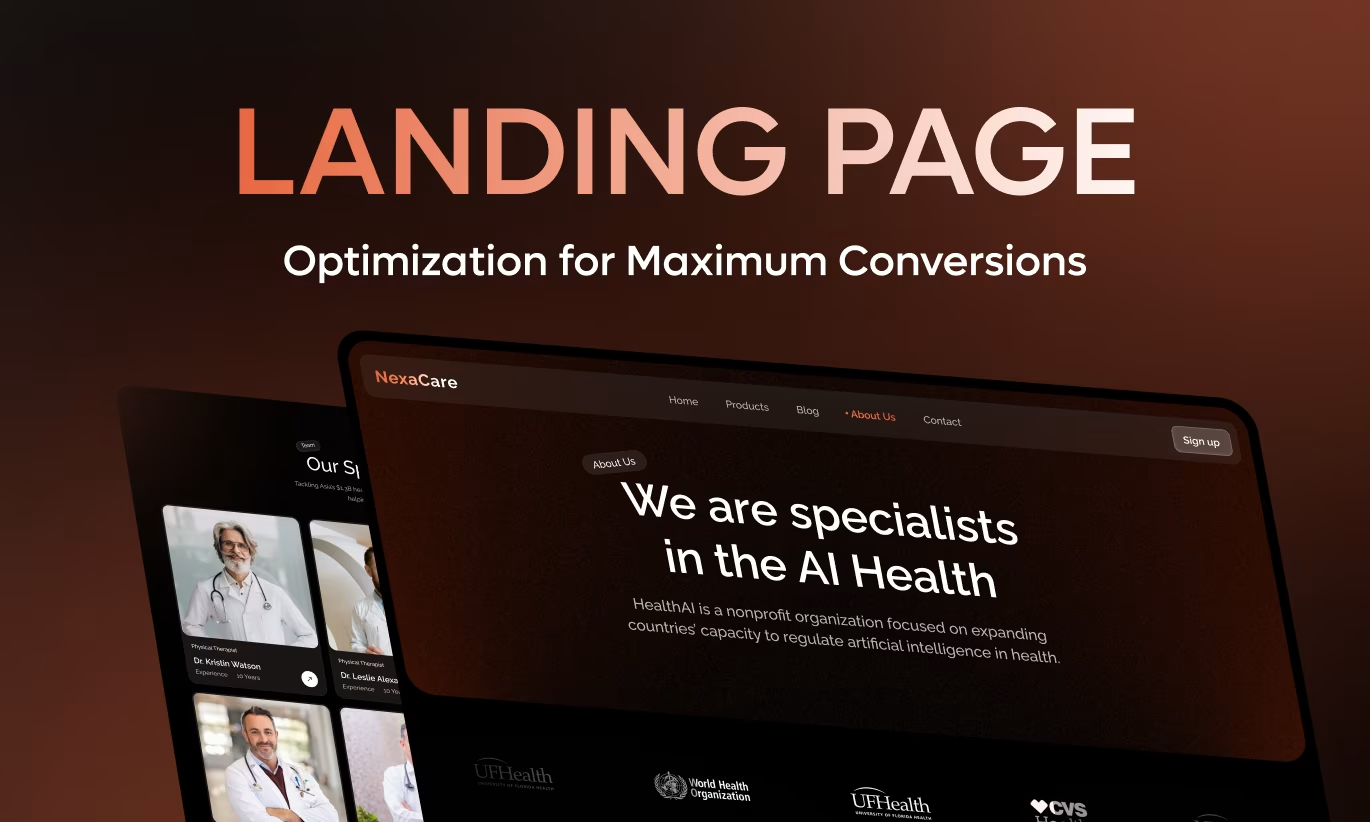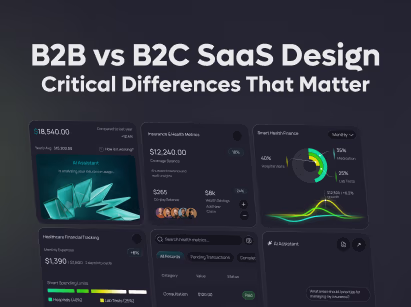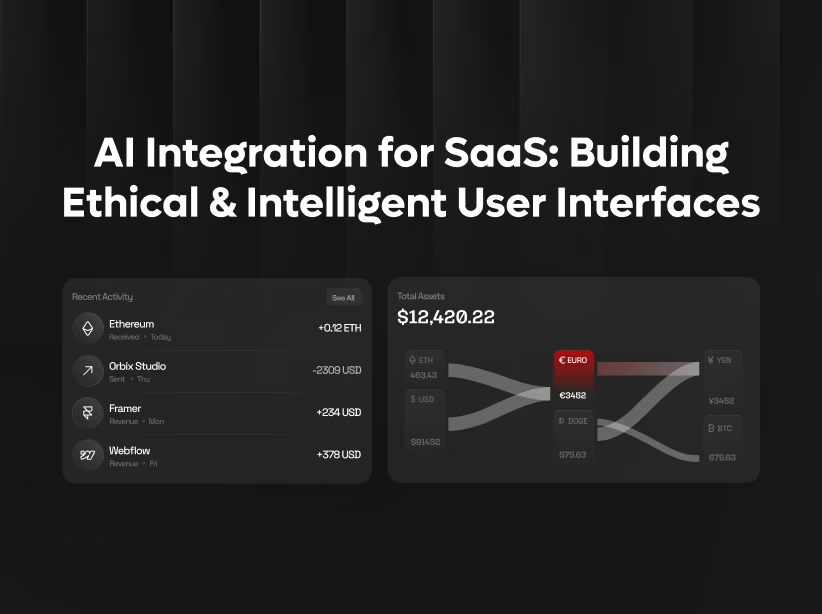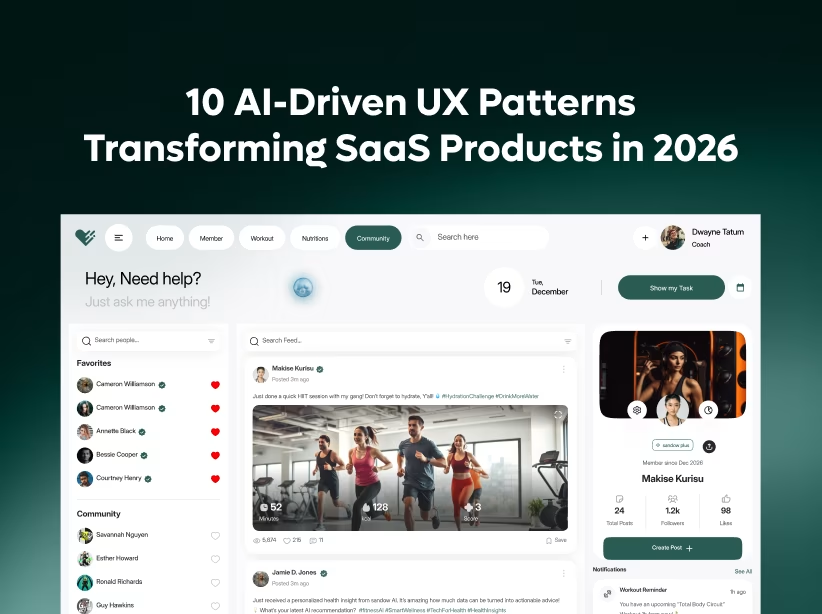Table of Contents

Most landing pages waste 90-95% of their traffic. Visitors arrive, glance for 3-5 seconds, and leave without converting. This isn't because your product is weak or your audience is wrong—it's because your landing page fails to communicate value, build trust, or guide visitors toward action effectively.
The good news? Landing page optimization is one of the highest-leverage activities in digital marketing. Companies implementing strategic conversion rate optimization consistently achieve 70-100% conversion lifts—essentially doubling results from the same traffic. These improvements compound across every marketing dollar spent, transforming struggling campaigns into profitable growth engines.
This comprehensive guide reveals 15 proven landing page optimization strategies that have delivered extraordinary conversion lifts across thousands of tests. Each tactic is backed by data, explained with examples, and ready for immediate implementation.
Understanding Landing Page Conversion Fundamentals
Before diving into specific tactics, understanding what actually drives conversions provides essential context.
What is landing page optimization? The systematic process of improving landing page elements to increase the percentage of visitors completing desired actions—whether signups, purchases, downloads, or demo requests.
Why conversion lift matters financially: If you spend $10,000 monthly on ads generating 100 conversions at $100 cost-per-acquisition, doubling conversion rate to 200 conversions reduces CPA to $50. The same budget now generates 2x results, or you can halve spending while maintaining volume.
The conversion rate benchmark reality: Average landing page conversion rates sit at 2.35% across industries. Top performers achieve 5-10%+. The gap between average and exceptional represents millions in unrealized revenue for most businesses.
Strategy 1: Craft Compelling, Benefit-Focused Headlines
Your headline is the most important element on any landing page. 80% of visitors never read beyond it, making headline optimization the highest-impact starting point.
High-converting headline formula: [Desired Outcome] + [Time Frame] + [Without Common Objection]
Examples:
- "Generate 40% More Qualified Leads in 30 Days Without Increasing Ad Spend"
- "Build Your Mobile App in 6 Weeks Without a Development Team"
- "Reduce Customer Churn by 35% in 90 Days Without Complex Software"
Headline optimization tactics:
- Lead with outcomes, not features or processes
- Include specific numbers establishing credibility
- Address biggest customer objection immediately
- Use customer language, not company jargon
- Test radical variations, not minor word tweaks
A/B test result: Changing headline from "Cloud Storage Solution" to "Store, Sync & Share Files Securely—50GB Free" increased conversions 89% for a SaaS company.
Strategy 2: Simplify Your Value Proposition
Visitors should understand exactly what you offer and why it matters within 5 seconds of arriving. Confusion kills conversions faster than any other factor.
Value proposition clarity checklist:
- ✓ What you do (in plain English)
- ✓ Who it's for (specific audience)
- ✓ Key benefit (outcome they'll achieve)
- ✓ Why you're different (unique advantage)
Clarity techniques:
- Write at 6th-grade reading level for maximum comprehension
- Remove industry jargon and technical terminology
- Use concrete specifics over vague claims
- Show don't tell through visuals and examples
- Test with people unfamiliar with your product
Real example: A B2B SaaS company changed "Enterprise-Grade Cloud Infrastructure Management Platform" to "Reduce Server Costs 30% While Improving Uptime—No DevOps Team Required" and saw 76% conversion increase.
Strategy 3: Above-the-Fold Optimization
The "fold" (content visible without scrolling) captures attention or loses visitors forever. Optimize this critical real estate ruthlessly.
Essential above-the-fold elements:
- Clear, benefit-focused headline
- Supporting subheadline expanding on promise
- Hero image or video showing product/outcome
- Primary call-to-action button
- Trust indicators (customer logos, ratings, security badges)
What doesn't belong above the fold:
- Navigation menus (remove distractions)
- Lengthy feature lists
- Multiple competing CTAs
- Footer information
- Anything not driving conversion decision
Optimization test: Removing navigation menu and secondary CTAs increased conversions 44% for an e-commerce landing page by eliminating distractions.
Strategy 4: Strategic Use of Social Proof
Humans are social creatures who look to others when making decisions. Social proof reduces perceived risk and accelerates trust-building.
High-impact social proof types:
Customer testimonials with photos, names, companies, and specific results achieved. Generic praise converts poorly; specific outcomes convert powerfully.
Customer logos from recognizable brands establish instant credibility. Position prominently near headline or CTA.
Usage statistics like "Join 50,000+ companies" or "4.8/5 stars from 12,000 reviews" leverage popularity.
Case studies with concrete metrics proving results. "How [Company] increased revenue 40% in 90 days" outperforms generic claims.
Video testimonials generate $3x$ higher conversion than text alone by building emotional connection and authenticity.
Trust badges including security certifications, awards, industry recognition, and guarantees.
Placement strategy: Position social proof near conversion points where trust matters most—immediately above signup forms or checkout buttons.
Test result: Adding customer logos and "4.9/5 stars from 8,000+ users" near CTA button increased conversions 68% for a software landing page.
Strategy 5: Optimize Your Call-to-Action (CTA)
The CTA button is the conversion moment. Every element—copy, color, size, placement—impacts performance significantly.
High-converting CTA best practices:
Button copy should use first-person, action-oriented language communicating value:
- Weak: "Submit" | Strong: "Get My Free Trial"
- Weak: "Download" | Strong: "Send Me the Guide"
- Weak: "Learn More" | Strong: "Show Me How It Works"
Visual design with high-contrast colors standing out from page, generous padding making buttons large and clickable, and subtle shadows or animations drawing attention.
Strategic placement with primary CTA above the fold, secondary CTAs after key information sections, and final CTA at page bottom for scrollers.
Urgency elements like "Start Free Trial Today" or "Limited Spots Available" motivate immediate action without feeling manipulative.
Test result: Changing button copy from "Sign Up" to "Get Started Free—No Credit Card Required" increased conversions 94% by addressing objection directly.
Strategy 6: Reduce Form Friction Dramatically
Every form field you ask for reduces conversion rates 5-10%. Request only what's absolutely necessary initially.
Form optimization tactics:
Minimize fields to bare essentials. For lead generation, email alone often suffices. Collect additional information progressively after initial conversion.
Smart field design with inline validation showing errors immediately, clear labels and placeholder examples, logical field ordering, and auto-fill support.
Multi-step forms for complex conversions break intimidating long forms into digestible steps with progress indicators maintaining momentum.
Remove optional fields entirely rather than marking them optional. If it's optional, don't ask for it initially.
Test result: Reducing form from 11 fields to 4 increased conversions 120% for a B2B lead generation page. Additional data was collected post-conversion via email.
Strategy 7: Address Objections Proactively
Every prospect has concerns preventing conversion. Anticipate and address these objections explicitly on your landing page.
Common objections and solutions:
"It costs too much" → Show ROI, display pricing transparently, offer free trial, compare cost to alternatives
"It won't work for me" → Include diverse case studies, show use cases, offer guarantees, provide easy cancellation
"I don't have time to implement" → Emphasize quick setup, show implementation timeline, offer done-for-you services
"I don't trust you" → Add security badges, showcase customer logos, display reviews, provide guarantees
"I need to think about it" → Create urgency (limited offer, scarcity), reduce commitment (free trial), offer consultation
Strategic placement: Address objections in FAQ section, within feature descriptions, near CTAs, and through strategic social proof.
Strategy 8: Optimize Page Load Speed
Every second of load time costs 7% of conversions. Slow pages hemorrhage conversions before visitors even see your content.
Speed optimization priorities:
Image optimization through compression, WebP format, lazy loading, and appropriately sized images for viewport.
Minimize HTTP requests by combining files, removing unnecessary scripts, using CSS sprites, and eliminating third-party tracking that slows pages.
Leverage browser caching and CDN delivery for faster load times globally.
Critical CSS inline enables above-the-fold content rendering immediately.
Target metrics: First Contentful Paint under 1.5 seconds, Time to Interactive under 3 seconds, total load under 5 seconds.
Impact: Improving load time from 6 seconds to 2 seconds typically increases conversions 40-80%.
Strategy 9: Use Urgency and Scarcity Authentically
Genuine urgency and scarcity motivate immediate action by providing reasons to convert now rather than later.
Ethical urgency tactics:
Limited-time offers with clear deadlines: "Offer ends Friday at midnight" with countdown timer.
Scarcity indicators showing genuine limited availability: "Only 3 spots remaining at this price."
Seasonal promotions tied to real events: "Black Friday pricing—48 hours only."
Early-bird pricing for launches: "Founding member rate ends when we reach 100 customers."
Important: Never use fake scarcity or urgency. Users detect manipulation, destroying trust permanently.
Test result: Adding authentic countdown timer for limited Beta access increased conversions 52% compared to evergreen "Join waitlist."
Strategy 10: Implement Strategic Visual Hierarchy
Visual design guides eyes toward important elements. Strategic hierarchy leads visitors through the conversion path naturally.
Hierarchy techniques:
Size matters with headlines largest, subheadings medium, body text smaller establishing clear importance.
Color contrast draws attention to CTAs and key benefits through strategic use of brand colors versus neutral backgrounds.
Whitespace around important elements provides breathing room focusing attention.
Directional cues like arrows, images of people looking toward CTAs, and visual flows guide eye movement.
F-pattern design acknowledges natural reading patterns, placing critical information in the "hot zones."
Strategy 11: Mobile-First Optimization
Over 60% of landing page traffic comes from mobile devices. Mobile-optimized pages aren't optional—they're essential.
Mobile optimization essentials:
Responsive design adapting layouts perfectly across all screen sizes without horizontal scrolling.
Thumb-friendly elements with minimum $44 \times 44$ pixel tap targets, adequate spacing, and controls in comfortable reach.
Simplified navigation removing unnecessary elements, streamlining forms, and focusing on a single conversion goal.
Fast mobile load optimizing images aggressively, minimizing scripts, and testing on actual mobile devices with varied connections.
Mobile-specific CTAs using click-to-call buttons for phone leads and mobile wallet integration for purchases.
Impact: Mobile-optimized versions typically convert 2-3x better than desktop-only designs shrunk to mobile screens.
Strategy 12: A/B Test Systematically
Optimization is continuous improvement through systematic testing, not one-time changes based on best practices.
Effective testing methodology:
Test one variable at a time isolating impact. Test headlines separately from CTA buttons separately from forms.
Run tests to statistical significance requiring minimum 95% confidence level and adequate sample size (typically 1,000+ conversions per variation).
Prioritize high-impact elements testing headline, CTA, hero image, and form before minor design tweaks.
Document learnings recording what worked, what didn't, and hypotheses for why. Build institutional knowledge over time.
Testing tools: Google Optimize, Optimizely, VWO, Unbounce, or built-in platform testing features.
Testing velocity: Run 2-4 tests monthly
Strategy 13: Use Video Strategically
Video converts 80% better than text-only pages when implemented correctly, but poor video implementation hurts conversions.
High-converting video guidelines:
Keep it short with 30-90 seconds explaining value proposition quickly. Every second beyond 90 seconds reduces view completion.
Auto-play muted allowing visitors to opt-in to audio rather than forcing disruptive sound.
Add captions since 85% of videos are watched without sound, especially on mobile.
Show don't tell demonstrating product rather than talking head presentations.
Strategic placement above the fold for video-first approach or mid-page for long-form content.
Optimize thumbnail with compelling image and "play" icon encouraging clicks.
Strategy 14: Personalize Based on Traffic Source
Visitors from different sources have different awareness levels and motivations. Personalized landing pages convert significantly better.
Personalization opportunities:
Paid search visitors arrive with high intent. Focus on conversion with minimal education needed.
Social media traffic requires more context and education. Emphasize social proof and community.
Email subscribers are warm leads. Acknowledge the relationship and reference previous engagement.
Referral traffic varies by source. Match messaging to the referring site's positioning.
Geographic personalization adjusts language, currency, examples, and testimonials to the visitor's location.
Implementation: Use dynamic content tools or create separate landing pages for major traffic sources.
Impact: Personalized landing pages convert 2-5x better than generic one-size-fits-all pages.
Strategy 15: Implement Exit-Intent Popups
Capture visitors about to leave with strategic exit-intent offers without annoying engaged visitors.
Exit-intent best practices:
Compelling offers providing genuine value: exclusive discounts, free resources, extended trials, or consultations.
Clear value proposition communicating the benefit immediately in the popup headline.
Single focused CTA avoiding multiple choices causing decision paralysis.
Easy dismissal with a visible close button respecting visitor choice.
Strategic timing showing only to visitors spending 30+ seconds on the page demonstrating real interest.
Mobile-friendly using mobile-specific triggers since traditional mouse movement doesn't apply.
Test result: Exit-intent popup offering a 10% discount captured 15-25% of abandoning visitors, effectively increasing the overall landing page conversion rate 30-40%.
Measuring Landing Page Optimization Success
Track these metrics evaluating optimization effectiveness:
Primary metrics:
- Conversion rate (primary KPI)
- Cost per acquisition (CPA)
- Revenue per visitor (RPV)
- Return on ad spend (ROAS)
Secondary metrics:
- Bounce rate
- Time on page
- Scroll depth
- Form start vs. completion rate
- Click-through rate on CTAs
Testing metrics:
- Statistical significance
- Confidence level
- Sample size adequacy
- Segment performance variations
Common Landing Page Optimization Mistakes
- Testing too many variables simultaneously makes determining what actually worked impossible. Change one thing at a time.
- Stopping tests too early before reaching statistical significance produces unreliable results leading to poor decisions.
- Ignoring mobile experience while optimizing desktop wastes 60%+ of traffic opportunity.
- Adding too much content attempting to answer every question creates overwhelming pages that convert poorly.
- Neglecting load speed while perfecting design creates beautiful pages nobody waits to see.
- Following best practices blindly without testing for your specific audience. What works for others may not work for you.
Implementation Roadmap
Week 1-2: Establish baseline metrics, identify highest-impact pages, audit current performance against best practices.
Week 3-4: Implement quick wins (headline optimization, CTA improvements, form reduction) delivering immediate impact.
Week 5-8: Run first A/B tests on headline, hero section, and primary CTA variations.
Week 9-12: Implement winning variations, start testing secondary elements, build a testing roadmap.
Ongoing: Run 2-4 tests monthly, compound improvements over time, document learnings systematically.
Conclusion: Optimization as Growth Strategy
Landing page optimization delivers 70-100% conversion lifts not through single magic bullets but through systematic improvement of multiple elements. Each 10-20% gain compounds into transformative business impact.
The mathematics are compelling: doubling conversion rate doubles revenue from existing traffic, halves customer acquisition cost, and transforms marketing from cost center to profit engine. For most businesses, this represents the highest-leverage growth opportunity available—improving results without increasing spending.
At Orbix Studio, we've optimized thousands of landing pages across industries, consistently delivering 70-100%+ conversion lifts through data-driven testing and strategic design. Our systematic methodology combines conversion psychology, technical optimization, and rigorous testing to maximize every marketing dollar you spend.
Ready to double your landing page conversions?
Free Landing Page Audit
Get a complimentary conversion optimization analysis:
✓ Conversion barrier identification across your landing page
✓ Prioritized recommendations by impact potential
✓ Quick-win opportunities for immediate implementation
✓ Testing roadmap for ongoing optimization
✓ Estimated conversion lift from recommended changes
Limited to 5 companies monthly | Average audit value: $3,000
Fresh UI/UX Ideas, Straight to Your Inbox





